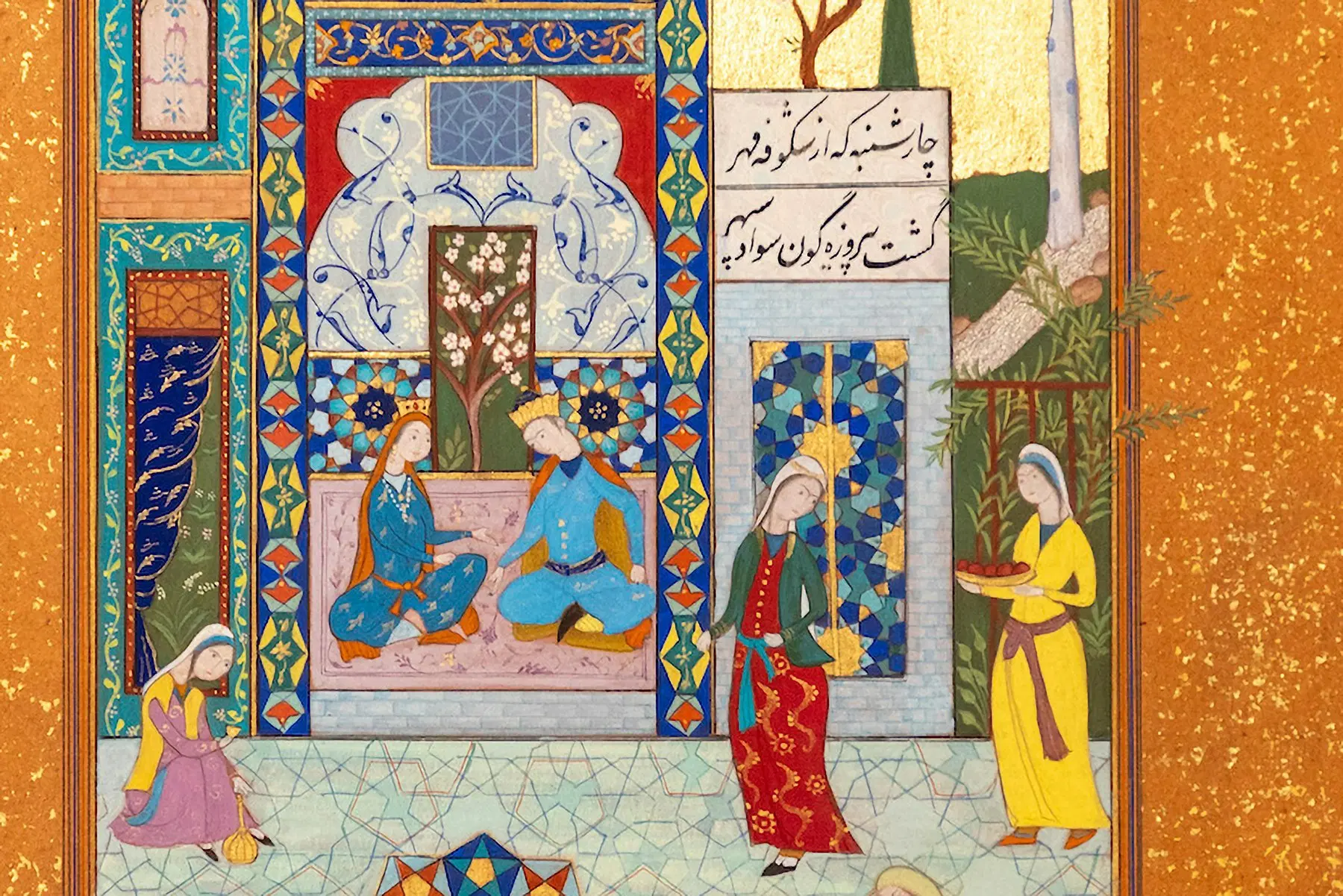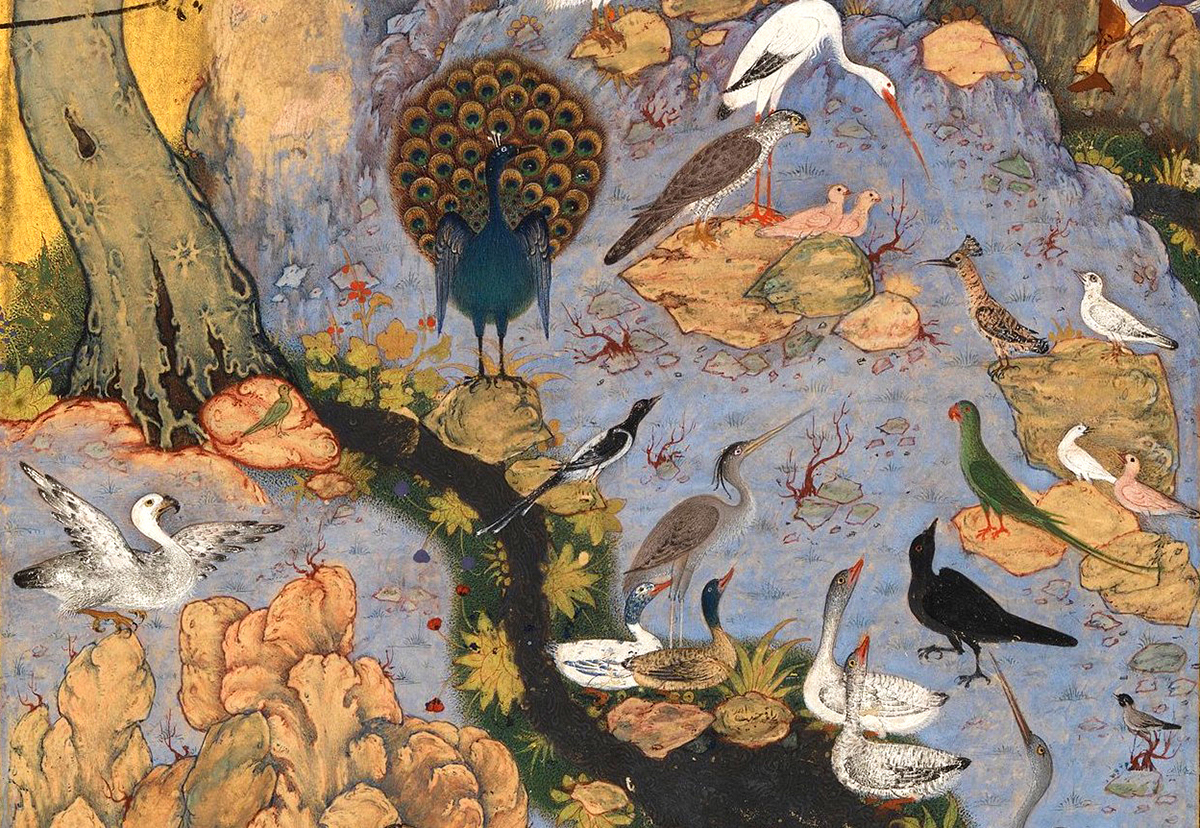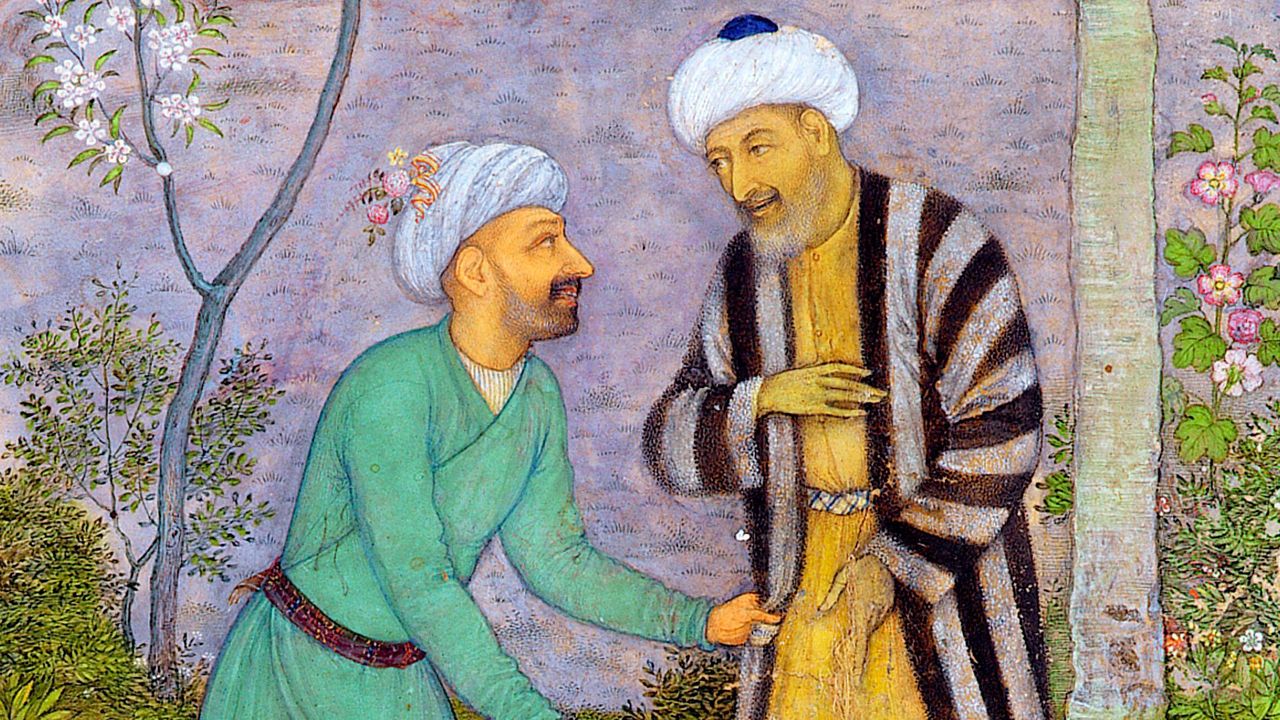Lasting beyond its 12th‑century origins, Nizami Ganjavi’s Haft Paykar (“Seven Beauties”) stands as a jewel of Persian romance—an exquisite fusion of poetic elegance, moral reflection, and narrative ingenuity. Part of his famed Khamsa (Quintet), this work weaves the story of King Bahram Gur’s seven‑day sojourn through pavilions of different colors, each hosted by a princess whose tale offers him lessons in love, ethics, and self‑knowledge. In this post, we’ll explore how Haft Paykar uses the framework of storytelling to probe the nature of affection, the responsibilities of power, and the transformative power of narrative itself.
A Glimpse at the Frame Story
-
Bahram Gur’s Quest for Balance. The Sasanian king Bahram V—nicknamed “Gur” (Onager, a wild ass) for his hunting prowess—seeks respite from courtly intrigues and the grief of lost love. His mentor, the wise astrologer Barzu, counsels him to build seven pavilions around a marble lake in his pleasure garden, each painted in a distinct hue.
-
The Seven Pavilions & Princesses. Each dusk, Bahram visits one pavilion—Black, Yellow, Green, Red, Violet, Brown, and White—where a princess of corresponding origin (from India, Byzantium, Arabia, etc.) shares a story that speaks to matters of the heart, virtue, and vice.
This structural frame—royal retreat bracketed by nested tales—allows Nizami both to enchant with romantic adventure and to guide readers through a moral cosmos rich in symbolism.
Love in Its Many Forms
Haft Paykar celebrates love’s beauty and complexity:
-
Passionate Yearning. Early in the poem, Bahram’s memory of his beloved Azada (a captive princess whom he frees and marries) casts a gentle melancholy over his feasting halls. His initial longing reminds us that love and sorrow often walk hand‑in‑hand.
-
Courtly Romance. The tales told by the princesses brim with chivalric valor—knights risking life and limb for a glimpse of their lady’s face, epic sieges waged in her name, and tokens of fidelity exchanged beneath moonlit skies.
-
Transformative Affection. In each pavilion, the king witnesses how love can elevate character—teaching compassion, self‑sacrifice, and spiritual aspiration—and how its mismanagement leads to jealousy, betrayal, and ruin.
Through these layered portrayals, Nizami affirms that love is both the source of civilization’s greatest achievements and its deepest tragedies.
Morality Woven in Verses
Beyond romance, Haft Paykar functions as a guide to ethical conduct:
-
Wisdom Through Parable. Each princess’s story is a miniature moral play. In the “Violet Pavilion,” for instance, the tale of a miserly ruler undone by his own cruelty underscores the perils of avarice and the necessity of generosity.
-
Kingship as Stewardship. By placing Bahram in the role of an attentive listener, Nizami reminds real‑world rulers that just governance requires humility and the willingness to learn from others—whether counselors or subjects.
-
Inner Rectitude. Many anecdotes celebrate characters who conquer base impulses—anger, lust, or vanity—through self‑discipline and reflection, modeling the Sufi ideal of the purified heart.
Nizami’s moral universe is neither didactic nor simplistic; rather, it invites readers to discern ethical nuances amid the poetry’s sumptuous imagery.
The Art of Storytelling
At its heart, Haft Paykar is a meditation on narrative itself:
-
Nested Narratives. Like a set of Chinese boxes, the poem invites readers inward—from kingly frame to princess’s parable, sometimes even deeper into tales within tales—illustrating how stories mirror and inform one another.
-
Color and Symbolism. Each pavilion’s hue resonates with its tale’s mood and message—green for renewal, black for hidden dangers, white for purity—transforming setting into living metaphor.
-
Poetic Craftsmanship. Nizami’s masterful use of ruz o shab (day and night) imagery, rhythmic couplets, and parallelism creates an immersive, almost theatrical experience that dazzles as it instructs.
By foregrounding how stories shape character—both fictional and real—Haft Paykar asserts that narrative is not mere entertainment but an essential medium for moral and spiritual education.
Reading Haft Paykar Today
-
Find a Good Translation. Look for versions by Dick Davis or Julie Scott Meisami, who balance fidelity to Nizami’s rhetoric with clear, evocative English.
-
Reflect on the Colors. As you read each pavilion, pause to journal what the color and its tale evoke in your own life—moments of transformation, temptation, or clarity.
-
Host a Story Circle. Gather friends to read aloud a princess’s tale, then discuss its moral lessons and contemporary resonances—much like Bahram’s nightly audiences.
-
Pair with Art. Explore Persian miniatures depicting scenes from Haft Paykar; the interplay of visual and verbal art deepens appreciation of Nizami’s aesthetic world.
Conclusion
Nizami Ganjavi’s Haft Paykar remains a testament to storytelling’s enduring power—to transport the heart, to instill moral wisdom, and to illuminate the complexities of love and leadership. By journeying through its seven pavilions, we rediscover that every story we encounter—and every tale we tell—shapes who we become. May your own “pavilions” of reflection yield insights as radiant as the Seven Beauties themselves.





